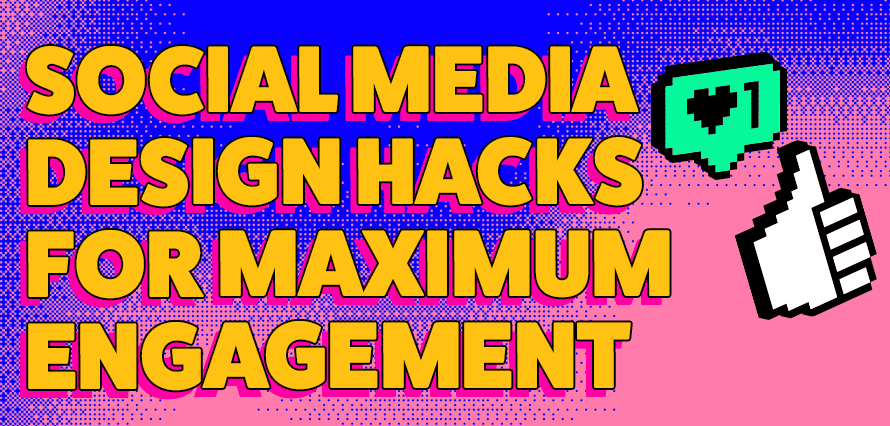June 24, 2025

Social media marketing is a powerful tool for businesses to engage with their audience, build brand awareness, and drive conversions. However, with the sheer volume of content being shared every second, standing out requires more than just posting – it demands efficient, high-quality design.
In today’s blog, we’ll explore key strategies for creating visually compelling and effective social media designs that capture attention and deliver results.
1. Understand Platform-Specific Design Requirements
Each social media platform has unique dimensions, formats, and audience expectations. Optimizing your designs for each platform ensures better engagement.
Key Dimensions:
Instagram:
- Posts: 1080×1080 px (Square), 1080×1350 px (Portrait), 1080×566 px (Landscape)
- Stories: 1080×1920 px
- Reels: 1080×1920 px (9:16 ratio)
Facebook:
- Posts: 1200×630 px
- Cover Photo: 820×312 px
- Stories: 1080×1920 px
X (Formery Twitter):
- Posts: 1600×900 px
- Header: 1500×500 px
LinkedIn:
- Posts: 1200×627 px
- Cover Photo: 1584×396 px
Pinterest:
- Pins: 1000×1500 px (2:3 ratio recommended for engagement)
TikTok:
- Videos: 1080×1920 px
Bluesky:
- Posts: 1080×1080 px (Square), 627×1200 px (Portrait), 1200×627 px (Landscape)
Threads:
- Posts: 1080×1080 px (Square), 1080×1350 px (Portrait), 1080×566 px (Landscape)
Pro Tip: Use tools like Canva, Adobe Express, or Figma to create templates for each platform to save time.
2. Keep It Simple & On-Brand
Cluttered designs can confuse viewers and dilute your message. Follow these key principles:
- Consistent Branding: Use the same colour palette, fonts, and logo placement.
- Minimal Text: Social media is visual- keep text short and impactful.
- High-Quality Images & Videos: Blurry or pixelated visuals hurt credibility.
Example:
- Good: A clean Instagram post with bold typography, a single focal point, and brand colours.
- Bad: Overloaded with text, multiple fonts, and mismatched colours.
3. Use Eye-Catching Visual Hierarchy
Guide your audience’s attention effectively:
- Contrasting Colours (e.g., dark text on a light background).
- Bold Headlines & Subheadings for quick readability.
- Strategic Placement of CTAs (e.g., “Shop Now,” “Learn More”).
Example:
4. Leverage Motion & Video Content
Videos and animations grab attention faster than static images.
- Short-form videos (TikTok, Reels, YouTube Shorts) perform exceptionally well.
- Animated text & transitions can make posts more engaging.
- Live videos boost real-time interaction.
Pro Tip: Use CapCut, or Adobe Premiere Rush for quick video edits.
Example:
5. Optimise for Mobile Users
Over 90% of social media users access platforms via mobile. Ensure:
- Text is large enough to read on small screens.
- Key elements are centred (avoid edges where buttons may hide them).
- Fast-loading visuals (compress images with TinyPNG or ShortPixel).
6. A/B Test Designs for Better Performance
Not all designs will resonate equally. Test variations to see what works:
- Different colour schemes
- Alternate CTA placements
- Varied image styles (e.g., lifestyle vs. product-focused)
Use Facebook Ads Manager or Instagram Insights to track engagement and refine strategies.
7. Use Templates & Automation Tools
Save time and maintain consistency with:
- Canva (for quick designs)
- Adobe Express (for advanced branding)
- Buffer/Hootsuite (for scheduling posts)
Pro Tip: Batch-create content weekly/monthly to stay consistent.
Final Thoughts
Efficient social media design isn’t just about aesthetics – it’s about strategically communicating your brand’s message in the most engaging way possible. By optimising for each platform, maintaining brand consistency, leveraging video, and testing performance, you can create high-impact social media content that drives real results.
What’s your biggest challenge with social media design?
Need professional social media designs? Then give us a shout! We’d love to talk 😎